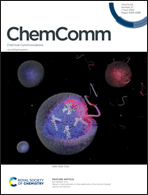Confined synthesis of condensed π-conjugation C-PAN/MS-CN nanotubes for efficient photocatalytic H2 evolution†
Abstract
Condensed π-conjugation C-PAN/MS-CN nanotubes were obtained via a facile polyacrylonitrile (PAN)-confined molten salt (MS) thermal condensation of melamine. Carbonized PAN (C-PAN) nanosheets with a conjugate network structure in the molten salt system acted as partition plates confining the thermal condensation of melamine, which promoted the formation of condensed π-conjugation carbon nitride (CN) for the effective charge carrier separation and photocatalytic H2 evolution.



 Please wait while we load your content...
Please wait while we load your content...